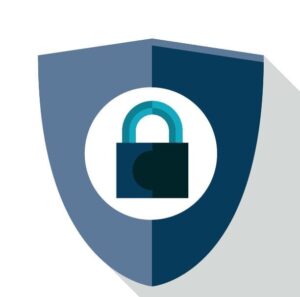It’s August, and in North America that means it’s back to school season, which for some students includes the daily use of biometric technology. Education is a huge area of application for biometrics all around the world. From attendance tracking for both teachers and students, to access control, to meal cards, strong authentication can serve to greatly improve the school experience at all levels of participation, from kindergarten to university. Of course, the realm of biometrics and education is not without its share controversy either, with some schools, parents and even entire US states fighting the technology’s implementation.
Throughout August we will be placing a special focus on biometrics in schools, and to kick things off, here is a primer to familiarize you with the current state of affairs. Welcome to Education Month at FindBiometrics.
Controversy
 Biometrics in schools are plagued by controversy in the United States, and any conversation about the area of application can’t really happen without acknowledging this friction. Famously, the Florida State Senate banned the collection of all student biometrics in 2014 after a long battle originating from a poorly deployed school bus attendance system. Since then, while no controversy has reached such high levels, parental concerns have thwarted deployments elsewhere in America and a buzz of discontent surrounds any talk of new biometrics systems in schools.
Biometrics in schools are plagued by controversy in the United States, and any conversation about the area of application can’t really happen without acknowledging this friction. Famously, the Florida State Senate banned the collection of all student biometrics in 2014 after a long battle originating from a poorly deployed school bus attendance system. Since then, while no controversy has reached such high levels, parental concerns have thwarted deployments elsewhere in America and a buzz of discontent surrounds any talk of new biometrics systems in schools.
The positive that can be taken away from the biometrics in American schools controversy it is that, despite the occasional but loud resistance, the benefits of strong authentication are still being embraced and it’s proving to be a particularly appropriate avenue through which to demystify the technology. The following links will get you caught up on the Florida biometrics ban and a recent abandonment of biometrics in San Diego schools.
IBIA Responds To Florida Student Biometrics Ban
San Diego School District Cancels Biometric Login System
Interview: Walter Hamilton on Florida Student Biometrics Ban
Taking Attendance
 Elsewhere in the world controversy seems a bit more muted as biometrics are finding increasing acceptance in Africa, the Middle East and parts of Asia. The biometrics technology often is deployed in a time and attendance capacity, bringing all the regular benefits as we explored in our Time & Attendance Month including anti-fraud measures. A recent deployment of Credence ID’s mobile biometrics technology in Nigeria, for instance, is meant to ensure test takers aren’t having someone else do their test for them, essentially fighting a type of academic buddy-punching.
Elsewhere in the world controversy seems a bit more muted as biometrics are finding increasing acceptance in Africa, the Middle East and parts of Asia. The biometrics technology often is deployed in a time and attendance capacity, bringing all the regular benefits as we explored in our Time & Attendance Month including anti-fraud measures. A recent deployment of Credence ID’s mobile biometrics technology in Nigeria, for instance, is meant to ensure test takers aren’t having someone else do their test for them, essentially fighting a type of academic buddy-punching.
Here are some of the ways we are seeing biometrics track academic attendance around the globe:
Indian State to Implement Biometric Attendance in Schools
Saudi Arabia to Bring Biometric Attendance Tracking to Schools
Integrated Biometrics Tech To Track Teachers in Pakistan
Credence ID to Authenticate Nigerian Students
INTERVIEW: Bruce Hanson, CEO, Credence ID
Brain Food
 Biometrics and commerce are no strangers, and that’s as true of school cafeterias as it is of mobile wallets. Fingerprints are replacing meal cards in the school lunch line – on an opt-in basis of course – allowing for better meal planning on behalf of the parents and greater financial privacy for underprivileged students on subsidies. This idea is even being applied to the post-secondary level of education, with a recent deployment of Iris ID technology allowing students at Virginia Commonwealth University to gain cardless access to the dining center.
Biometrics and commerce are no strangers, and that’s as true of school cafeterias as it is of mobile wallets. Fingerprints are replacing meal cards in the school lunch line – on an opt-in basis of course – allowing for better meal planning on behalf of the parents and greater financial privacy for underprivileged students on subsidies. This idea is even being applied to the post-secondary level of education, with a recent deployment of Iris ID technology allowing students at Virginia Commonwealth University to gain cardless access to the dining center.
Kids to Scan Fingers For School Lunches
Iris Biometrics To Keep Students Fed on Weekends
Security

Biometric access control is an obvious application for schools. That said, biometric physical access control deployments the size of schools are nothing to turn your nose up at, requiring a large number of enrollments and parental permissions. That’s why it’s so remarkable that St. Mary’s High School in St. Louis has deployed facial recognition security, granting access and notifying staff of intrusions.
Physical access control biometrics tech is more common at the University level, in situations like that seen at UC Irvine where Fujitsu PalmSecure technology protects The Kay Family Foundation Innovation Lab.
Facial Recognition Deployed at St. Louis High School
IBIA White Paper Highlights School’s Biometric Security
Fujitsu Palm-Vein Solution Provides Physical Access Control at UC Irvine
*
Stay posted to FindBiometrics throughout August as we continue our back to school celebrations with Education Month. Join the conversation by following us on Twitter and tweeting with the hashtag #FBSchools.
—
August 6, 2015 – by Peter B. Counter


Follow Us